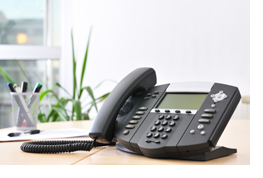In your office, a phone is ringing. A customer is calling to ask a question about services your company provides. But who answers the phone? And how do they answer the phone?
I hope the answer is with an upbeat voice and a professional demeanor, of course. We train our receptionists and desk attendants to be personable on the phone and follow the proper etiquette when speaking with customers. Sometimes, unfortunately, we forget to train them on the important stuff—providing good information!
Office staff should be kept up-to-date on current news within the company. When days get hectic, it’s easy to neglect telling the person who answers the phone what is going on; but, they are the ones who interface with clients, which means they need to be kept up to date!
Taking Messages
It’s also important to make sure the people answering the phones take good messages. Perhaps nowhere is this more important than in the medical field.
Physicians usually have assistants to answer phones and take messages. But it’s vitally important that assistants are able to take detailed, accurate messages.
One way to ensure that messages are being properly taken is to devise a message form. For example, you might have a form with checkboxes for different categories for the message, such as questions about medications, appointments, lab results, and so on.
This helps not only the assistant but also the physician who must respond to the message.
A message form can be helpful in other businesses too. They are one great way to keep things organized and moving smoothly. You could also buy message pads at office supply stores.
No more bad voicemail
We can’t sit by our phones at all times, which means sometimes we have to rely on our voicemail to stay in touch with clients. Some voicemail systems are just atrocious. Don’t lose customers by making them suffer through your horrible voicemail system.
Simplify those menus and make it easy to navigate. Provide direct extensions whenever possible. Callers know what they want when they call, so make it easy for them to get it quickly.
Make your greetings professional and brief. Don’t go on and on about your company or your office. Get to the point and give the important information. Greet and thank the customer for calling, ask for a phone number and give them an alternate number to call in case they need immediate assistance.
Always listen to your greeting and make sure you haven’t included any background noise or delays. Your greeting should sound professional and clean.





